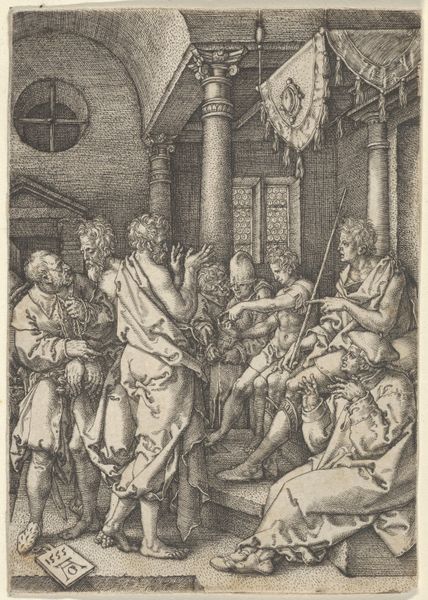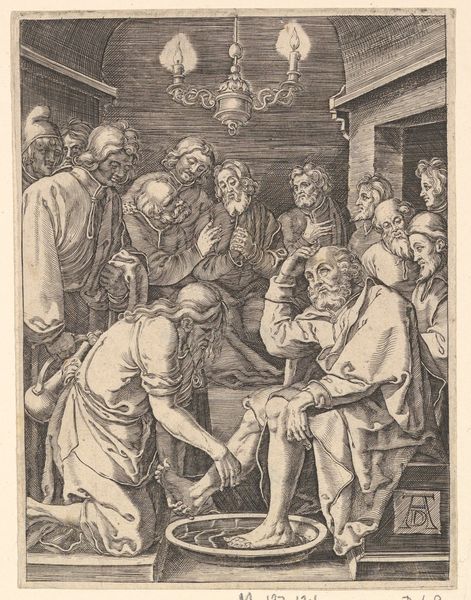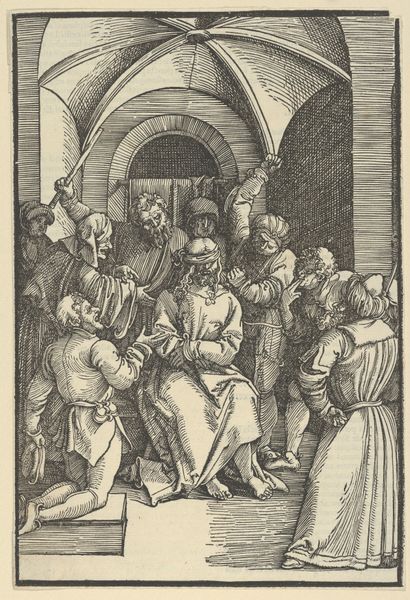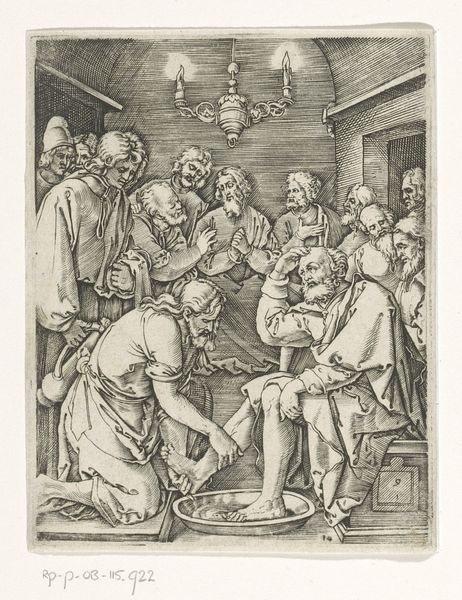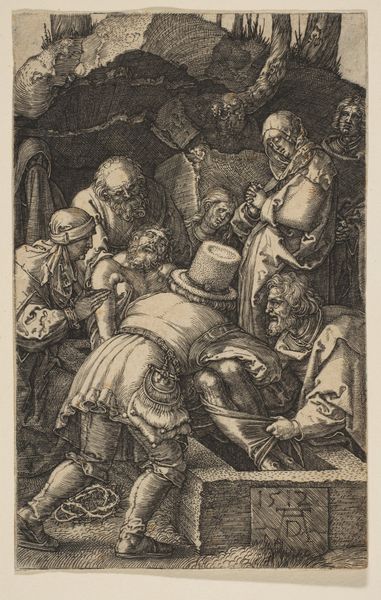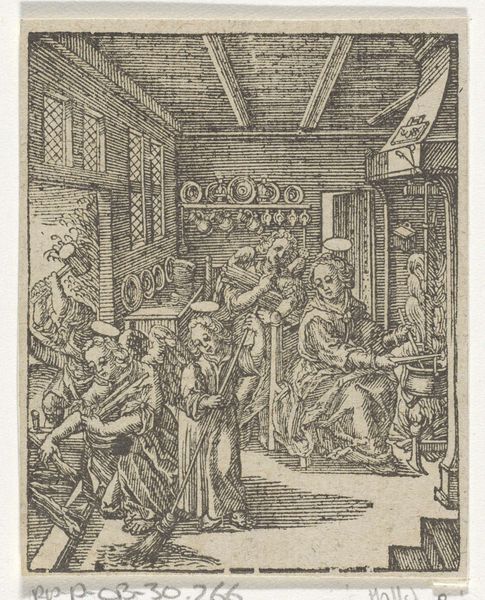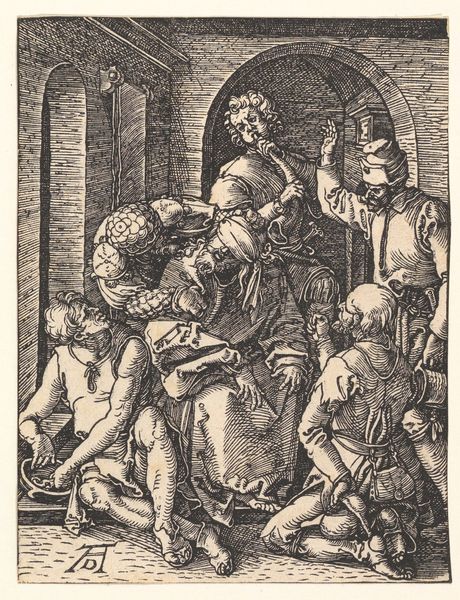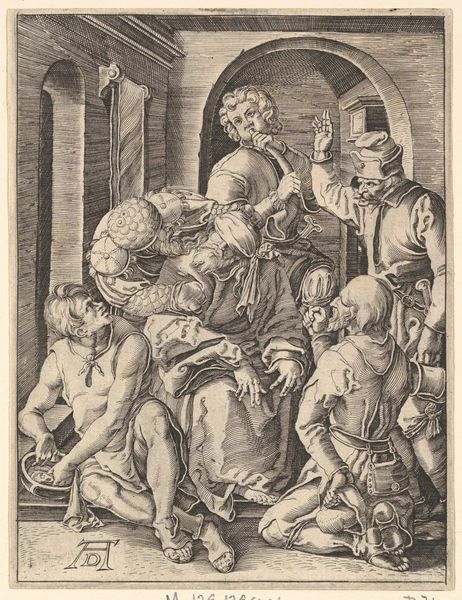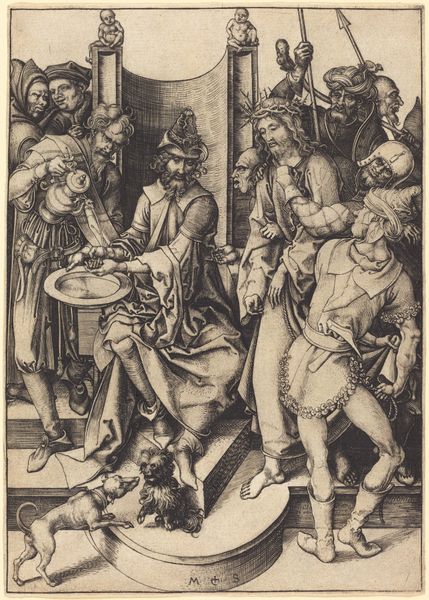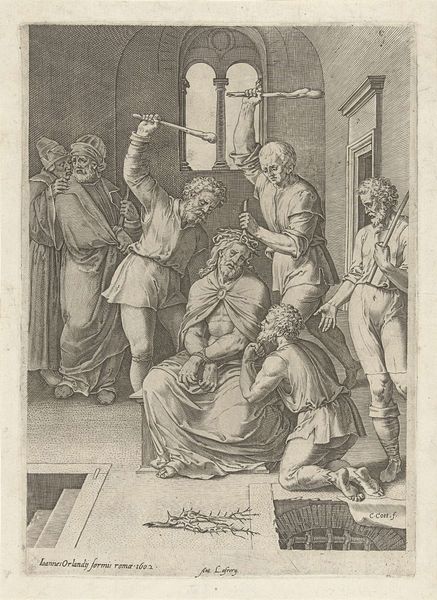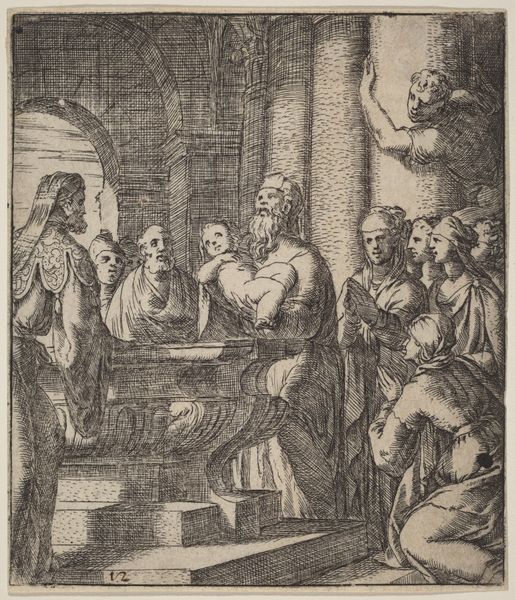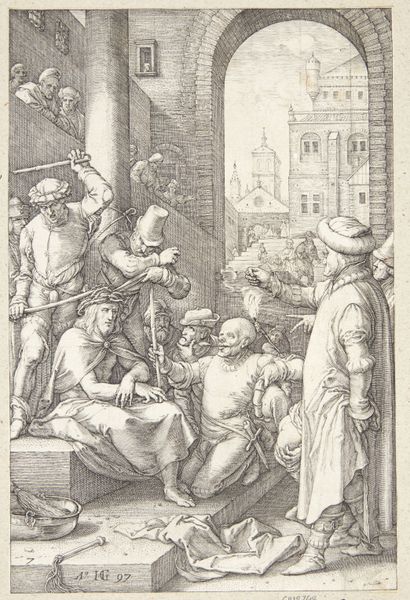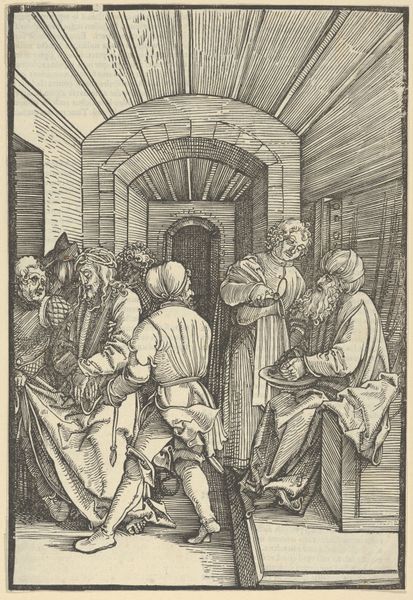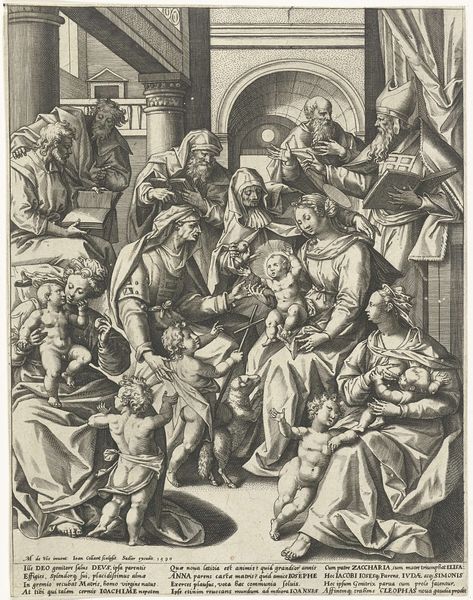
Christ Washing the Feet of the Disciples, from The Small Passion 1508 - 1509
0:00
0:00
drawing, print, engraving
#
drawing
#
medieval
#
narrative-art
#
pen drawing
# print
#
figuration
#
line
#
history-painting
#
northern-renaissance
#
engraving
Dimensions: sheet: 5 1/16 x 3 7/8 in. (12.8 x 9.8 cm)
Copyright: Public Domain
Editor: We’re looking at Albrecht Dürer’s "Christ Washing the Feet of the Disciples" from his "Small Passion" series, created around 1508-1509. It’s an engraving, with incredibly detailed line work. It almost feels claustrophobic, with so many figures crammed into the scene. How do you interpret this work in the context of its time? Curator: The cramped composition actually serves a purpose. Dürer isn't just depicting a biblical scene; he's also reflecting anxieties about social hierarchy within the Church at the time. The act of Christ, a divine figure, kneeling to wash the feet of his disciples challenges established power structures. Think about the role of the printing press. How does accessible imagery shape religious and political thought? Editor: That’s a great point! So, by making prints, Dürer democratizes access to this message of humility, challenging the authority of the Church elite, perhaps? Curator: Exactly. Consider the visual details: the intense expressions on the faces of the disciples, their varied reactions to Christ's act. What do these expressions convey about their understanding – or misunderstanding – of Christ's message of service? Also, consider who would have been buying or viewing these prints? Were they intended for private devotion, or did they have a more public function? Editor: That’s fascinating. I hadn’t considered the buyers’ perspective. I was so focused on the religious narrative. Now I see that it becomes almost a political statement depending on where the print is displayed. Curator: Dürer used visual narrative to spark discussion and possibly dissent. Reflect on how such accessible prints influenced perceptions and interpretations of scripture beyond the established Church's control. That's where the power truly lay. Editor: Wow, I never would have considered the social implications of something like printmaking in connection with an artwork like this. Curator: The history lies not just in the subject but in how that subject intersects with society and cultural trends of the time. Food for thought!
Comments
No comments
Be the first to comment and join the conversation on the ultimate creative platform.
